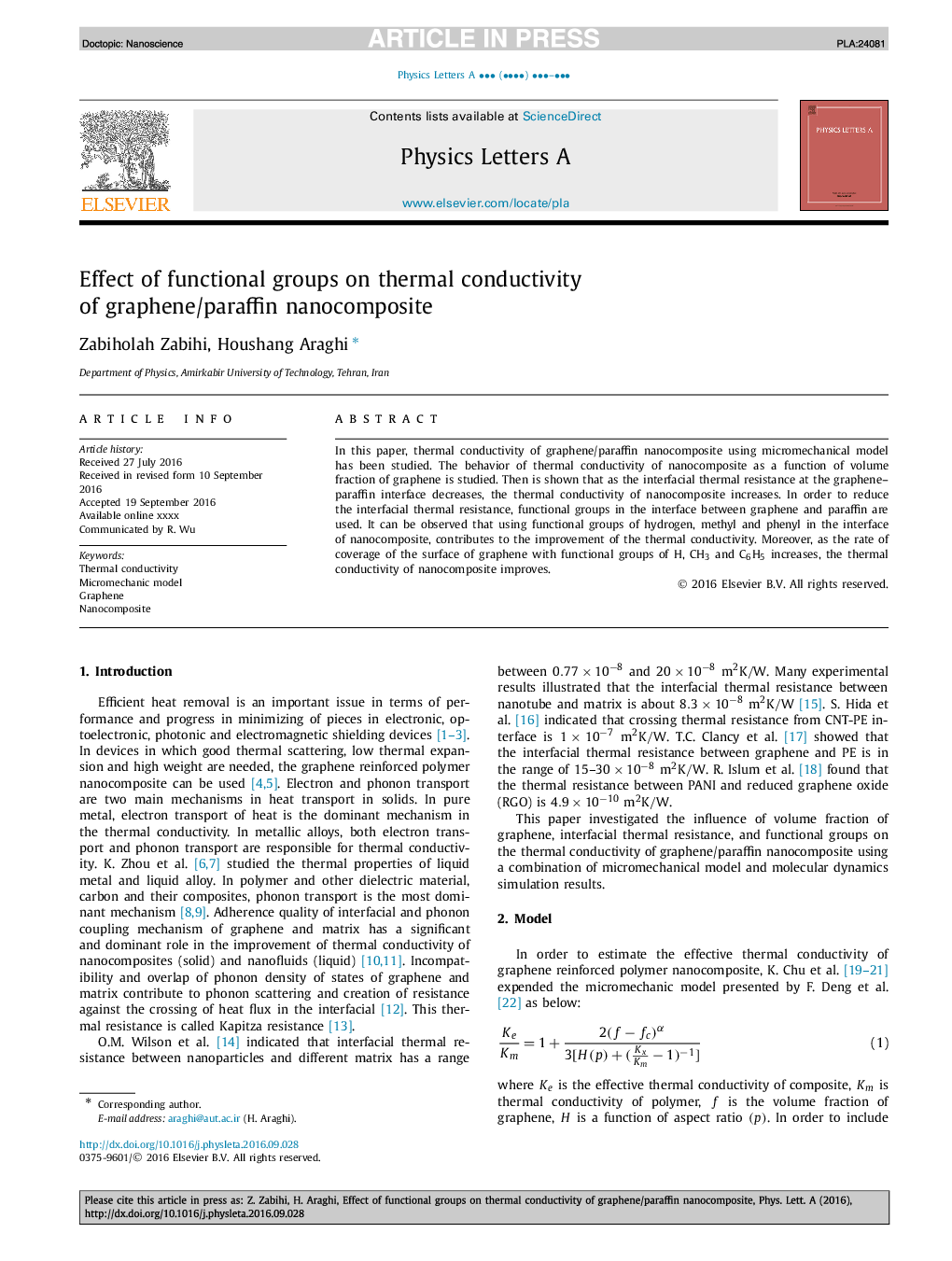| Article ID | Journal | Published Year | Pages | File Type |
|---|---|---|---|---|
| 5496674 | Physics Letters A | 2016 | 4 Pages |
Abstract
In this paper, thermal conductivity of graphene/paraffin nanocomposite using micromechanical model has been studied. The behavior of thermal conductivity of nanocomposite as a function of volume fraction of graphene is studied. Then is shown that as the interfacial thermal resistance at the graphene-paraffin interface decreases, the thermal conductivity of nanocomposite increases. In order to reduce the interfacial thermal resistance, functional groups in the interface between graphene and paraffin are used. It can be observed that using functional groups of hydrogen, methyl and phenyl in the interface of nanocomposite, contributes to the improvement of the thermal conductivity. Moreover, as the rate of coverage of the surface of graphene with functional groups of H, CH3 and C6H5 increases, the thermal conductivity of nanocomposite improves.
Related Topics
Physical Sciences and Engineering
Physics and Astronomy
Physics and Astronomy (General)
Authors
Zabiholah Zabihi, Houshang Araghi,
